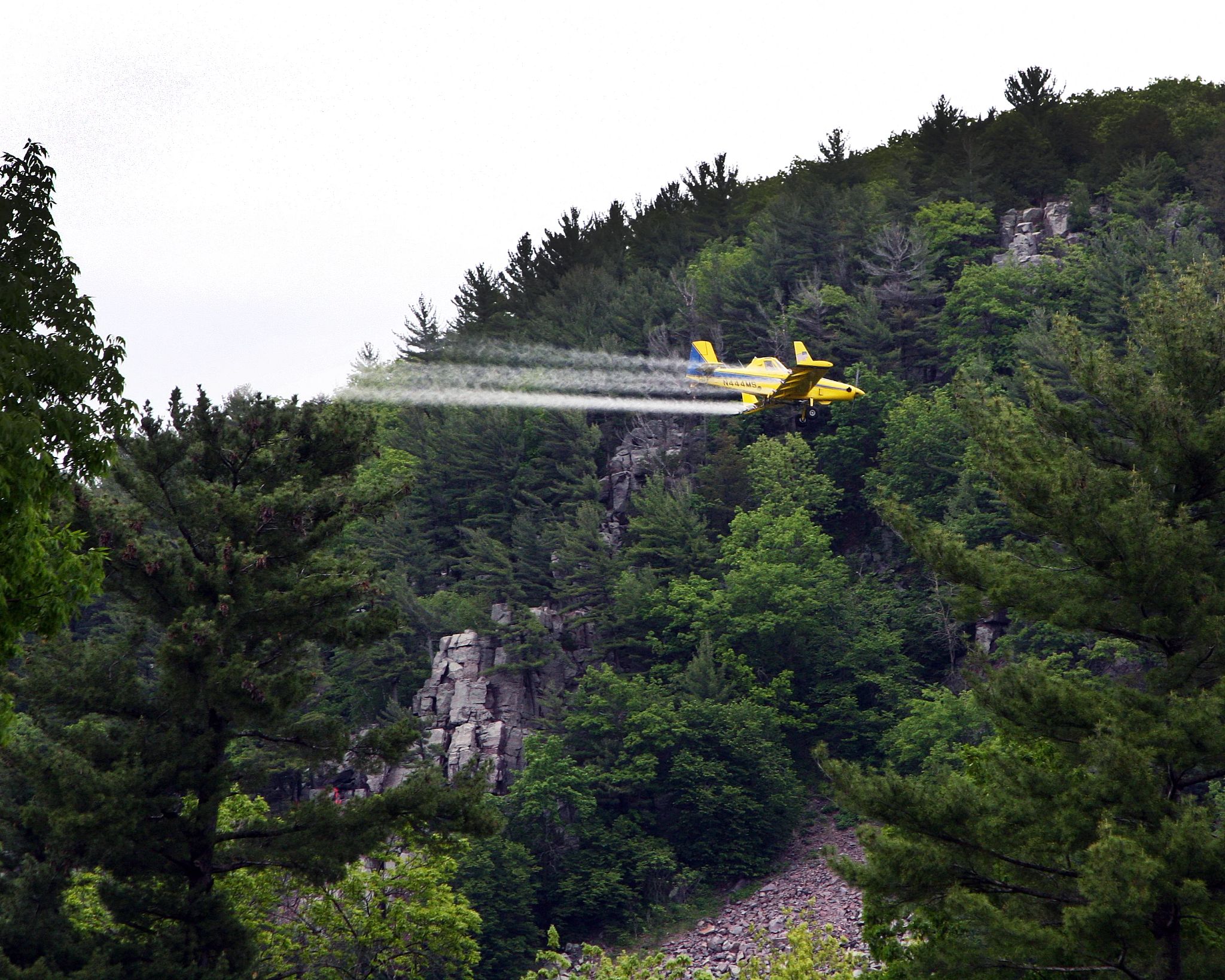Contact: Bill McNee, DNR Forest Health Specialist
Bill.McNee@wisconsin.gov or 920-360-0942
DNR Announces Aerial Spraying For Spongy Moth Caterpillars At Four State Properties
 Aerial spraying is an effective way to combat invasive spongy moth caterpillars at state properties.
Photo credit: Wisconsin DNR
Aerial spraying is an effective way to combat invasive spongy moth caterpillars at state properties.
Photo credit: Wisconsin DNR
MADISON, Wis. – The Wisconsin Department of Natural Resources (DNR) today announces aerial spraying operations will soon take place over four DNR properties to combat spongy moth caterpillars, formerly known as gypsy moth.
Spongy moth caterpillars strip trees of their leaves, potentially killing high-value trees. Spongy moth outbreaks occur every five to 10 years, and this year’s high populations threaten tree defoliation in high-use areas of some state properties.
The aerial spraying will take place in late May to early June, with the exact date and times depending on weather conditions and caterpillar development. The DNR plans to avoid spraying during the extended Memorial Day weekend if spraying has not taken place before then.
The insecticide, called Foray, contains Bacillus thuringiensis var. Kurstaki (Btk), a naturally occurring bacterium that affects only caterpillars that eat it within a few days of application. Approved for use in organic food production, Foray is not toxic to people, bees and other insects, and pets or other animals. It can be washed off cars and clothes with soap and scrubbing. However, the DNR advises nearby residents with severe allergies to consider staying indoors as the airplane sprays the properties.
A total of 625 acres at the four locations will be sprayed. Each site will be sprayed once; the spraying will take 10 to 30 minutes per site, depending on the size of the treatment area. Planes will fly very low, about 50 to 100 feet above the treetops. Spraying will occur only within the physical treatment boundaries. It can begin as early as 5 a.m. and may continue into the late morning or afternoon if weather conditions are favorable.
Detailed maps of treatment areas can be found on the DNR Forest Health website. The specific sites and areas to be sprayed are:
Big Foot Beach State Park (one site)
- Campground and forest surrounding the day-use area.
Devil’s Lake State Park (two sites)
- North Shore day-use area and the Northern Lights/Quartzite campgrounds, plus a portion of the Ice Age campground.
- South Shore day-use area.
Governor Dodge State Park (two sites)
- Twin Valley campground.
- Southern half of Cox Hollow campground.
Kettle Moraine State Forest – Southern Unit (three sites)
- Horseriders campground.
- Muir/Nordic trailheads.
- Oak restoration area at the intersection of State Highway 67 and County Trunk Highway S.
The Wisconsin Spongy Moth Information Portal will provide updates and additional information, and visitors can sign up for an e-mail list to receive notice when spraying dates are determined. Also, the toll-free Spongy Moth Hotline at 1-800-642-MOTH (1-800-642-6684) offers the chance to talk to staff or hear a recording of up-to-date spraying plans. Law enforcement, local governments, nearby schools and medical facilities will be notified of the spraying ahead of time.
The DNR spraying program complements the Wisconsin Department of Agriculture, Trade and Consumer Protection’s (DATCP) participation in the national Slow the Spread program. DATCP will use an airplane to treat about 71,250 acres at 37 sites in 10 western counties. The program was created to slow the westward spread of spongy moth by treating leading-edge populations of the pest.
Slow the Spread treatments will use either the same Foray insecticide as the DNR treatments, or a pheromone mating disruptor that prevents moth reproduction by interfering with the ability of male moths to find female moths. Learn more in this news release.

